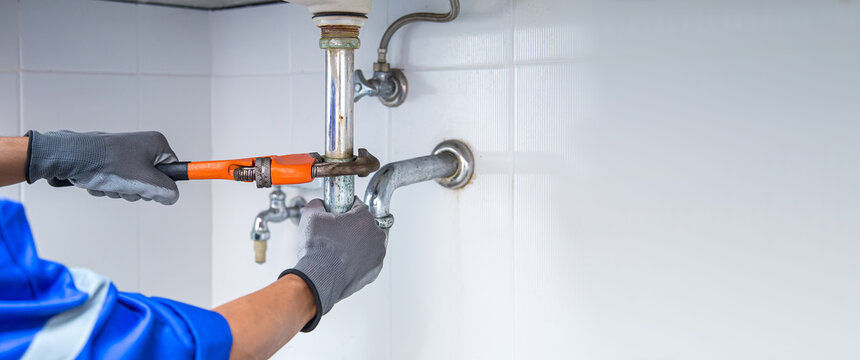Trenchless Sewer Repair: Efficient, Cost-Effective Solutions for Your Home
- Nearly Services
- Oct 21, 2024
- 3 min read
In the world of home maintenance, few things can cause as much stress as sewer line issues. Traditional repair methods often involve extensive digging, leading to disruption of your landscape, driveway, and even your home’s foundation. Fortunately, advancements in technology have brought forth trenchless sewer repair, a method that not only reduces the need for excavation but also proves to be efficient and cost-effective. In this blog, we’ll explore the benefits of trenchless sewer repair and why it might be the ideal solution for your home.

What is Trenchless Sewer Repair?
Trenchless sewer repair is an innovative technique that allows for the repair or replacement of sewer lines without the need for large-scale digging. Instead of excavating the entire length of the pipe, trenchless methods utilize advanced technology to access the sewer line through small entry points. This approach minimizes disruption to your property while still effectively addressing the underlying issues.
Types of Trenchless Repair Methods
Pipe Bursting: This method involves breaking apart the old, damaged pipe while simultaneously pulling a new pipe into place. It’s particularly useful for replacing old sewer lines that are beyond repair.
CIPP (Cured-In-Place Pipe): CIPP involves inserting a flexible resin-saturated liner into the damaged pipe, which is then inflated and cured to form a new, solid pipe within the old one. This method is excellent for repairing cracks, leaks, and other structural issues.
Horizontal Directional Drilling (HDD): This technique allows for the installation of new pipes with minimal surface disruption. It’s particularly useful for laying new sewer lines in challenging terrains or densely populated areas.
Advantages of Trenchless Sewer Repair
1. Minimal Disruption
One of the most significant benefits of trenchless sewer repair is the minimal disruption it causes to your property. Traditional methods often require extensive digging, which can tear up lawns, driveways, and gardens. With trenchless methods, only small access points are needed, preserving your landscape and reducing the mess associated with traditional repairs.
2. Cost-Effective
While the upfront cost of trenchless repair may be slightly higher than traditional methods, it can be more cost-effective in the long run. The reduced need for restoration of your yard or driveway, along with less labor time due to quicker installation, can save you money. Additionally, trenchless repairs typically have a longer lifespan than traditional repairs, meaning fewer future repairs and expenses.
3. Faster Repairs
Trenchless methods are generally quicker than traditional digging methods. Where traditional repairs may take several days or even weeks, trenchless repairs can often be completed in just a few hours. This efficiency means less inconvenience for you and your family, allowing you to return to your daily routine without prolonged disruptions.
4. Environmentally Friendly
With less excavation required, trenchless sewer repair is a more environmentally friendly option. Traditional methods can lead to significant soil disturbance and potential damage to nearby trees and plants. Trenchless methods, on the other hand, minimize environmental impact and help preserve the natural landscape around your home.
5. Improved Durability
The materials used in trenchless repairs, particularly in methods like CIPP, are designed to last. These modern materials are resistant to corrosion, tree root intrusion, and other common sewer line issues. This durability means you may enjoy a long-term solution to your sewer problems without the need for frequent repairs.
When is Trenchless Sewer Repair the Right Choice?
Trenchless sewer repair is ideal for a variety of situations, including:
Tree Root Intrusion: If tree roots are invading your sewer lines, trenchless methods can effectively remove the roots and repair the damage without extensive digging.
Aging Pipes: For older homes with outdated plumbing systems, trenchless methods can provide a modern solution without the hassle of full excavation.
Frequent Clogs and Backups: If you’re experiencing repeated sewer line issues, it might be time to consider a trenchless repair to address underlying problems.
Damage from Ground Shifting: In areas prone to soil movement, trenchless repairs can stabilize and reinforce damaged sewer lines.
Is Trenchless Repair Right for Your Home?
Before deciding on a trenchless sewer repair, it’s essential to consult with a qualified plumbing professional. They can assess your specific situation, identify the underlying issues, and determine whether trenchless methods are suitable for your home. Factors such as the type of soil, existing pipe materials, and the extent of damage will influence the decision.
Conclusion
Trenchless sewer repair offers homeowners an efficient, cost-effective solution to common sewer line problems. With its minimal disruption, reduced costs, and long-lasting results, it’s no wonder that more homeowners are turning to this modern approach. If you’re facing sewer line issues, consider the benefits of trenchless repair and consult a professional to explore your options. By choosing this innovative method, you can restore your sewer system without the headaches associated with traditional repairs, ensuring your home remains a safe and comfortable haven.







Comments